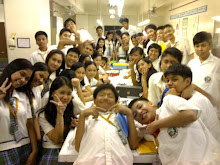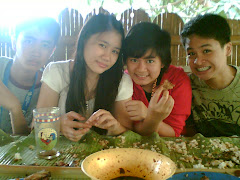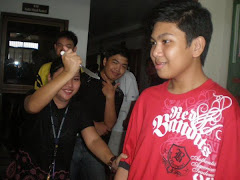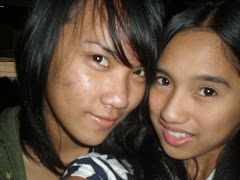The Human Genome Project is an international research effort to decode the human genome, the complete genetic instructions for a human being. Project leaders originally estimated the work would take 15 years, but with the help of supercomputers and adrenaline, they now expect to sequence the complete human code by 2003. With the final sequence in hand, scientists, doctors, and students will have the use of all the DNA information that is key to understanding even the most complex biological systems in our bodies. The possibilities for applications of this information in research are innumerable. At the very least, authorities expect the human code to revolutionize our understanding of human disease. When Human Genome Project researchers have completed their task, they will have mapped and sequenced three billion nucleotide base pairs.
 Transcribe and Translate a Gene
Transcribe and Translate a GeneCells use the two-step process of transcription and translation to read each gene and produce the string of animo acids that makes up a protein. The basic rules for translating a gene into a protein are laid out in the Universal Genetic Code.
Mutation, in biology, a sudden, random change in a gene, or unit of hereditary material, that can alter an inheritable characteristic. Most mutations are not beneficial, since any change in the delicate balance of an organism having a high level of adaptation to its environment tends to be disruptive. As the environment changes, however, mutations can prove advantageous and thus contribute to evolutionary change in the species. In higher animals and many higher plants a mutation may be transmitted to future generations only if it occurs in germ, or sex cell, tissue; somatic, or body cell, mutations cannot be inherited except in plants that propagate asexually. Sometimes the word mutation is used broadly to include variations resulting from aberrations of chromosomes; in chromosomal mutations the number of chromosomes may be altered, or segments of chromosomes may be lost or rearranged. Changes within single genes, called point mutations, are actual chemical changes to the structure of the constituent DNA.
Point Mutations
Each gene is made up of a long sequence of substances called nucleotides; these nucleotides, taken in series of three at a time, specify each amino acid subunit of a protein. In a frameshift mutation, a nucleotide is added or deleted to the sequence and the decoding of the entire gene sequence will be radically altered and the amino acid sequence of the protein produced will also be very different. Often the resulting protein is totally ineffective. If one nucleotide substitutes for another in the sequence only one amino acid of the protein will be different, but the effect can be quite dramatic. For example, the inherited sickle cell disease is the result of a mutation that results in the substitution of the amino acid valine for glutamic acid in hemoglobin.
Because proteins called enzymes control most cell activities, a mutation affecting an enzyme can result in alteration of other cell components. A single gene mutation may have many effects if the enzyme it controls is involved in several metabolic processes. Occasionally a mutation can be offset by either another mutation on the same gene or on another gene that suppresses the effect of the first. Certain genes are responsible for producing enzymes that can repair some mutations. While this process is not fully understood, it is believed that if these genes themselves mutate, the result can be a higher mutation rate of all genes in an organism.
Induced Mutations
Mutations may be induced by exposure to ultraviolet rays and alpha, beta, gamma, and X radiation, by extreme changes in temperature, and by certain mutagenic chemicals such as nitrous acid, nitrogen mustard, and chemical substitutes for portions of the nucleotide subunits of genes. H. J. Muller, an American geneticist, pioneered in inducing mutations by X-ray radiation (using the fruit fly, Drosophila) and developed a method of detecting mutations that are lethal.
Down Syndrome
 Down syndrome is the most common cause of mental retardation and malformation in a newborn. Down syndrome occurs because of the presence of an extra 21st chromosome.
Down syndrome is the most common cause of mental retardation and malformation in a newborn. Down syndrome occurs because of the presence of an extra 21st chromosome.Chromosomes are the materials that store people's genetic information. Each person inherits 23 chromosomes from their mother and twenty three chromosomes from their father. Sometimes an accident occurs and one of the parents gives an extra chromosome. When the extra chromosome happens to be chromosome number 21, Down Syndrome occurs. Down Syndrome is not contagious. Down Syndrome is also called trisomy 21.
Individuals with Down Syndrome may not experience all of the symptoms. Some of the common symptoms are: decreased muscle tone at birth, asymmetrical or odd-shaped skull, round head with flat area at the back of the head, small skull, slanting eyes, small mouth with protruding tongue, broad short hands, single crease on the palm, retarded growth and development, delayed mental and social skills (mental retardation).
Children with Down syndrome have a widely recognized characteristic appearance. Their head may be smaller than normal and abnormally shaped. Other prominent characteristics of Down syndrome are: a flattened nose, protruding tongue, upward slanting eyes, short hands and fingers, and a single crease in the palm.
Unfortunately, Down syndrome cannot be prevented. There is no specific treatment for Down syndrome. However, treatment is available for the health problems that the person might have. Special education and training is offered in most communities for mentally handicapped children.
There are many medical consequences related to Down syndrome. Some of the consequences are: inability to reach normal growth and development; Congenital heart defects in infants, early mortality; acute lymphocytic leukemia, and gastrointestinal abnormalities. A person with Down syndrome may have an obstruction of the esophagus and obstruction of the duodenum.
Another medical consequence of Down syndrome is a faster aging process. There is also a tendency to develop diseases of aging, such as Alzheimer's, at a relatively early age.
Even a single thing could change the whole being.
Starting from the human genome to the transcription and translation of a gene, to an organism, everything is interrelated. If there's a cause, there's an effect. A change in the gene or genetic sequence of an organism (Mutation) would be already resulting in the creation of a new character or trait not found in the parental type. Down Syndrome, a trisomy of chromosome pair 21 is an example. Still, I believe that these children who have this syndrome still have the chance and right to feel what is life, how is it to be respected, loved and most of all appreciated by their family, their own parents. There is no one who we could blame and of course no one ever wanted this to happen. For me it's not by the appearance or on what we see and what we think a human is.
Here is my secret. It is very simple: It is only with the heart that one
can see rightly; what is essential is invisible to the eye.
Sometimes when I see children with such syndrome, I wonder how people interact with them and how their friends with the same state understand one another. When I was a child, I am really wondered by these people. The first time I saw one, it's a girl! The second that I saw it's a boy! I wondered why they look alike and their features exactly the same but I saw them in two different places! So I asked my mother then, she said it's an abnormality and she also has a cousin like that. First I was really amazed and then thought how did it be? They almost look like siblings. I don't have any idea about genes, DNA, chromosomes and many more before. Just when, we studied all about Genetics in our Biology subject I learned all about this things and it is making me. It is making me think what I am thinking now. It is making me say what I am saying now.
It is making the power with all the knowledge I have in me.
It is making the power with all the knowledge I have in me.
I thank my parents for sending me in an excellent school. I thank my school for making us have all the references we need and of course I thank my teacher for teaching all this things without hesitance, without having a single thought of distrust and to my classmates, friends and my brother who is always open to share ideas with me.
posted by: JAMILLA JYSSA MAE E. RENDOR














.jpg)






.jpg)

.jpg)

No comments:
Post a Comment